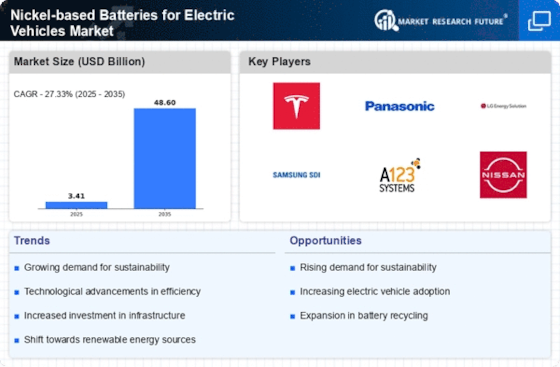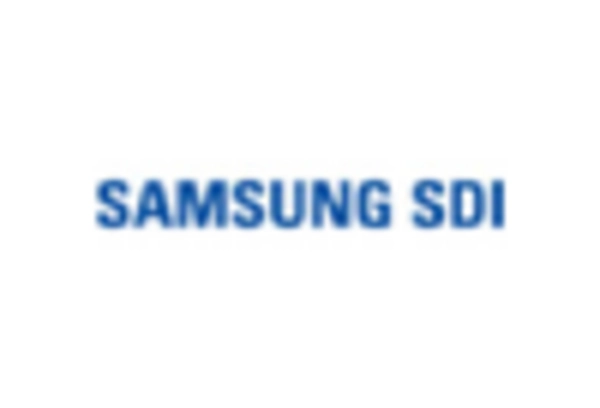The competitive landscape of the Nickel-based Batteries for Electric Vehicles Market is shaped by rapid technological advancements, evolving consumer preferences, and increasing government regulations aimed at reducing carbon emissions.
As electric vehicles (EVs) gain traction among consumers and industries around the world, the demand for efficient, high-performance battery technologies is surging. Nickel-based batteries, known for their favorable energy density, efficiency in high-drain applications, and comparatively low environmental impact, are becoming increasingly important in meeting this demand.
This has led to intensified competition as manufacturers strive for innovation, sustainability, and scalability to capture significant market shares.
Companies are investing heavily in research and development to enhance battery performance metrics, reduce costs, and ensure reliable supply chains, positioning themselves as front-runners in the expanding nickel-based battery ecosystem for electric vehicles.
Panasonic stands as a formidable player in the Nickel-based Batteries for Electric Vehicles Market, largely due to its long-standing expertise in battery technology and manufacturing. Renowned for its commitment to innovation, Panasonic leverages sophisticated battery chemistry and production processes that yield efficient and reliable nickel-based batteries.
The company has established robust partnerships with leading automotive manufacturers, allowing it to integrate its cutting-edge battery solutions into a variety of electric vehicle platforms. Panasonic's significant investment in research and development enables it to consistently enhance energy storage capabilities while maintaining competitive cost structures.
Additionally, its global manufacturing footprint and experience in scaling production offer a strategic advantage, positioning Panasonic as a key supplier in meeting the rising demand for electric vehicle batteries, underlining its strength in the market.
Samsung SDI also plays a critical role in the Nickel-based Batteries for Electric Vehicles Market, distinguished by its focus on advanced battery technologies and sustainable practices. The company is recognized for its development of high-capacity nickel-based batteries that cater to the performance requirements of electric vehicles.
Samsung SDI actively engages in research and innovation, aiming to improve the energy density and lifecycle of its batteries to enhance the overall efficiency of electric vehicles. The company's extensive investments in state-of-the-art production facilities and sustainable manufacturing processes bolster its capacity to meet the demanding requirements of the EV market.
Furthermore, Samsung SDI's strategic collaborations with automotive manufacturers position it favorably to capture market share, ensuring that it remains competitive in an industry characterized by rapid growth and technological evolution.


















Leave a Comment